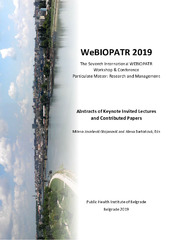Приказ основних података о документу
Effect of capacity and fuel type on dust emission from refinery furnace for atmospheric distillation
| dc.creator | Todorović, Dušan | |
| dc.creator | Obradović, Marko | |
| dc.creator | Jovović, Aleksandar | |
| dc.creator | Radić, Dejan | |
| dc.creator | Karličić, Nikola | |
| dc.creator | Stanojević, Miroslav | |
| dc.date.accessioned | 2023-03-01T09:46:23Z | |
| dc.date.available | 2023-03-01T09:46:23Z | |
| dc.date.issued | 2019 | |
| dc.identifier.isbn | 978-86-83069-56-9 | |
| dc.identifier.uri | https://machinery.mas.bg.ac.rs/handle/123456789/4840 | |
| dc.description.abstract | In order to investigate effect of fuel type and refinery furnace for atmospheric distillation capacity on dust emission field tests are performed. Tests include two different fuels (only refinery gas and mixture of 30% fuel oil and 70% refinery gas) and two different furnace capacity (80% and 100%). Those selected condition have been chosen for tests, as a most possible operating conditions. Usage of fuel oil or its mixture with refinery gas depends of current fuels availability within the refinery, while furnace capacity depends on current refinery production process. All procedures for field test are defined and performed in line with ISO 9096 Stationary source emissions — Manual determination of mass concentration of particulate matter, which describes a reference method for the measurement of particulate matter (dust) concentration in waste gases of concentrations from 20 mg/m3 to 1 000 mg/m3 under standard conditions and EN 13284-1 Stationary source emissions – Determination of low range mass concentration of dust – Part 1: Manual gravimetric method (for dust concentrations bellow 5 mg/m3). Furnace construction has been designed in that way that flue gases are discharging through three identical stacks, which are positioned along the top of furnace. All test are performed during the constant operating conditions and on each of stacks. Achieved results indicates that usage of mixture of fuel oil and refinery gas has higher potential for dust emissions comparing with usage of refinery gas only, namely significant difference in dust concentrations is noticed, while effect of furnace capacity on dust emissions, for both tested fuels, doesn’t show significant influence. | sr |
| dc.language.iso | en | sr |
| dc.publisher | Belgrade : Vinča Institute of Nuclear Sciences | sr |
| dc.rights | openAccess | sr |
| dc.source | Abstracts of Keynote Invited Lectures and Contributed Papers of The Seventh International WeBIOPATR Workshop & Conference Particulate Matter: Research and Management WeBIOPATR 2019, 1st to 3rd October, 2019 Belgrade, Serbia | sr |
| dc.title | Effect of capacity and fuel type on dust emission from refinery furnace for atmospheric distillation | sr |
| dc.type | conferenceObject | sr |
| dc.rights.license | ARR | sr |
| dc.citation.epage | 77 | |
| dc.citation.rank | M34 | |
| dc.citation.spage | 77 | |
| dc.identifier.fulltext | http://machinery.mas.bg.ac.rs/bitstream/id/11773/WEBIOPATR2019_Book_Of_Abstracts.pdf | |
| dc.identifier.rcub | https://hdl.handle.net/21.15107/rcub_machinery_4840 | |
| dc.type.version | publishedVersion | sr |


